Dermatiaceous Molds
1/32
There's no tags or description
Looks like no tags are added yet.
Name | Mastery | Learn | Test | Matching | Spaced |
|---|
No study sessions yet.
33 Terms
What is common among all Dermatiaceous Molds?
Dark-colored hyphae
What are the five dermatiaceous molds?
Alternaria
Bipolaris
Cladosporum
Curvularia
Phialophora verrucosa
What is the clinical significance of Alternaria species?
Contaminant
Skin & nail infections
Sinusitis
Conjunctivitis
Hypersensitivity pneumonia
Skin abscess
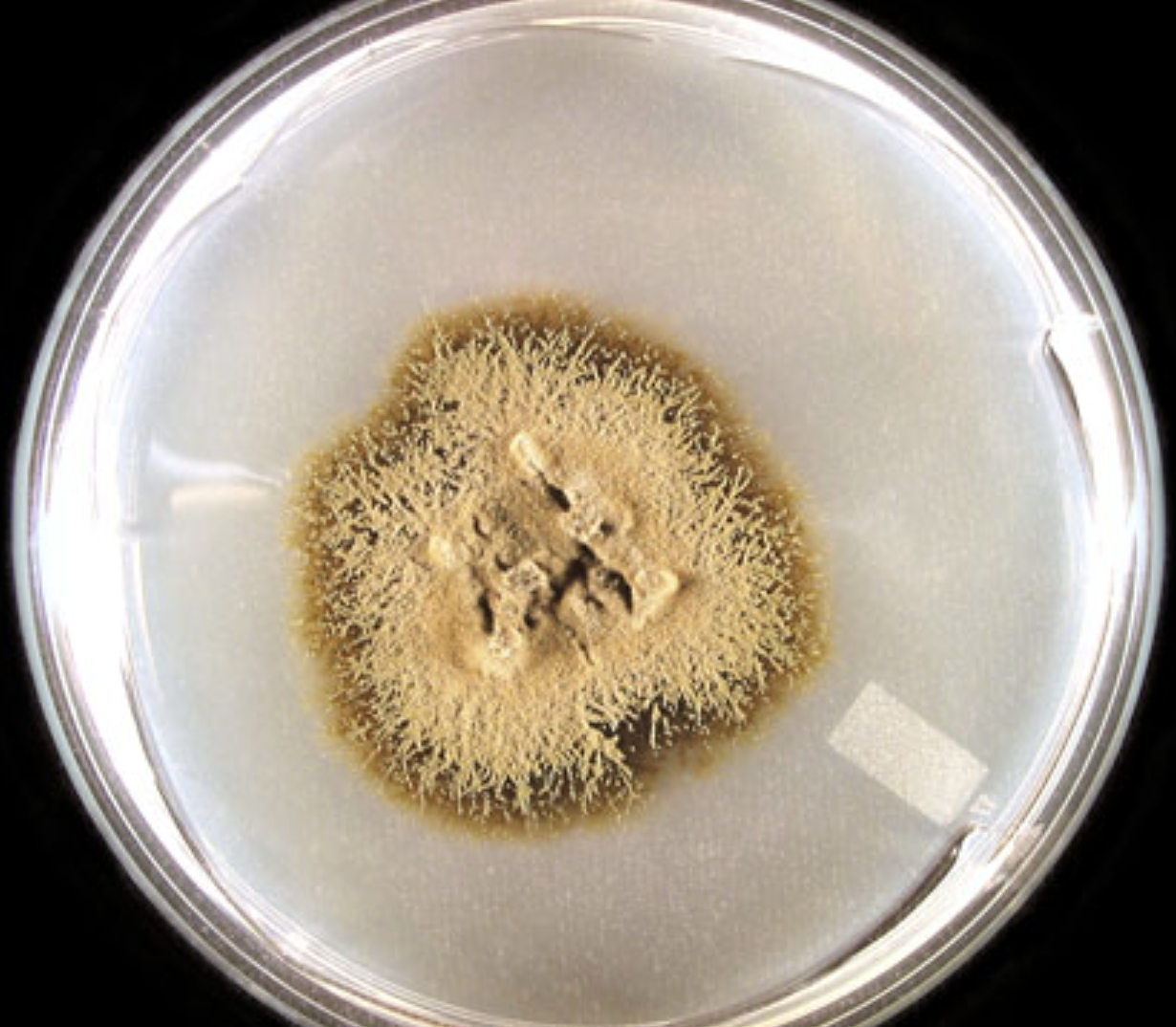
What organism is this? Obverse or reverse?
Alternaria obverse
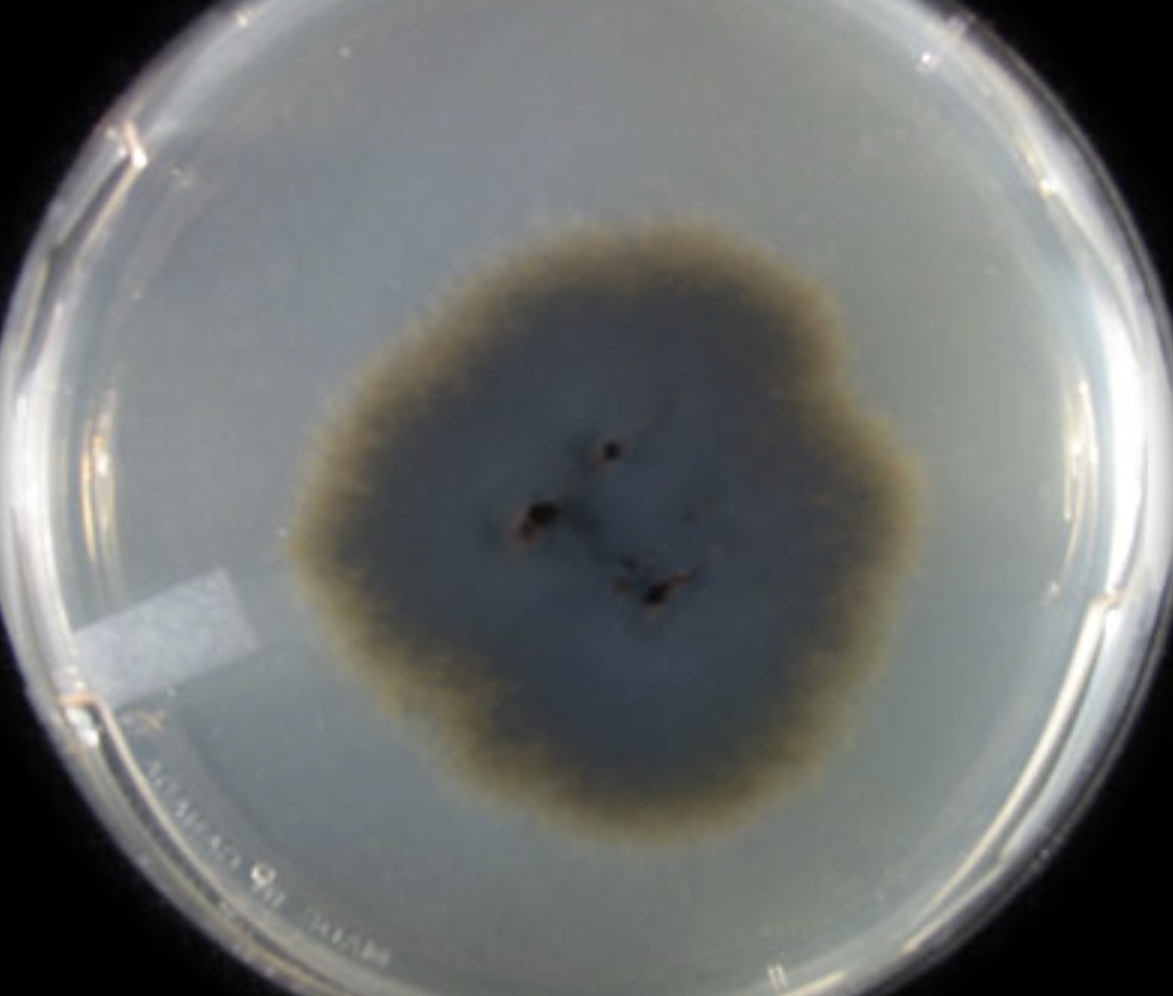
What organism is this? Obverse or reverse?
Alternaria reverse
What are some characteristics of the conidia in Alternaria species?
Transverse and longitudinal septation
Large and brown
In chains or singly
Club-like
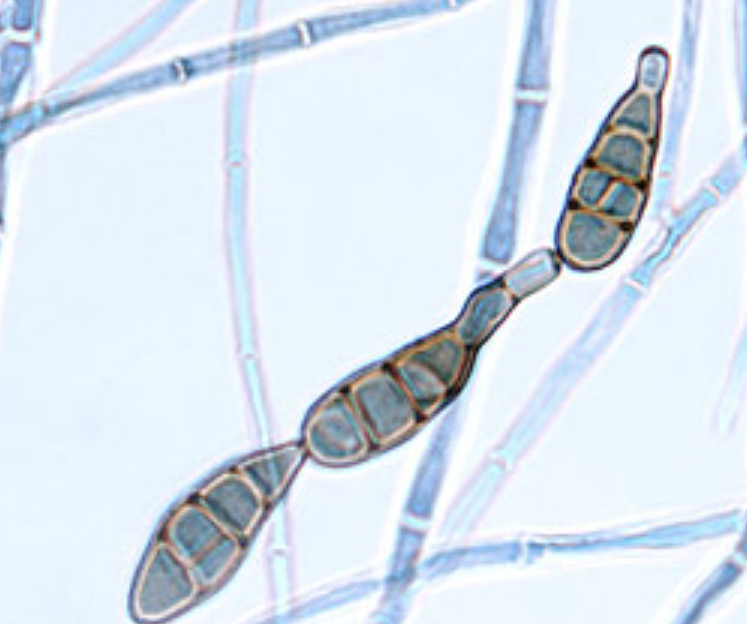
What organism is this?
Alternaria species
What is the clinical significance of Bipolaris species?
Mycotic Keratitis
Pheohyphomycosis (sinusitis)
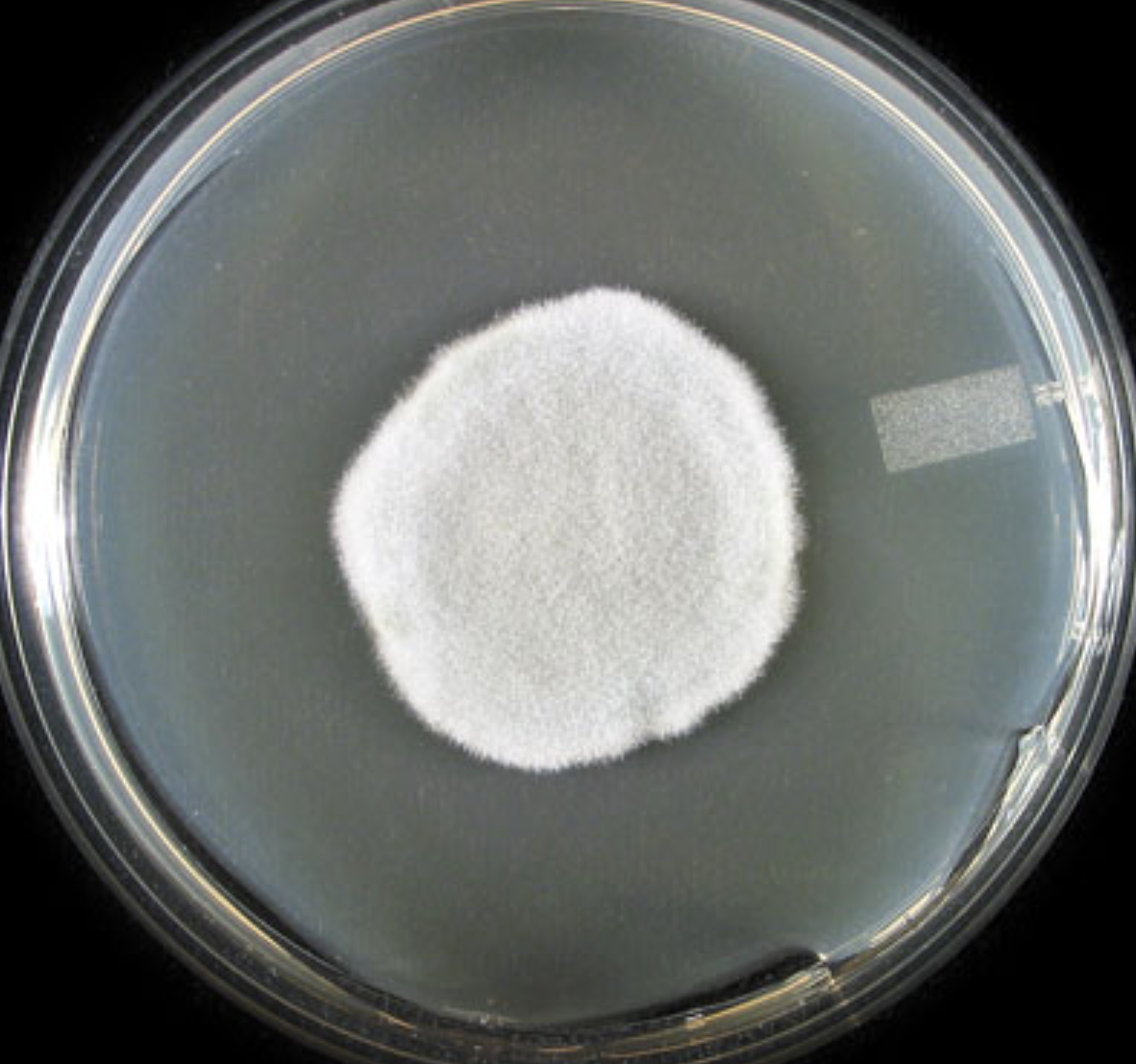
What organism is this? Obverse or reverse?
Bipolaris obverse
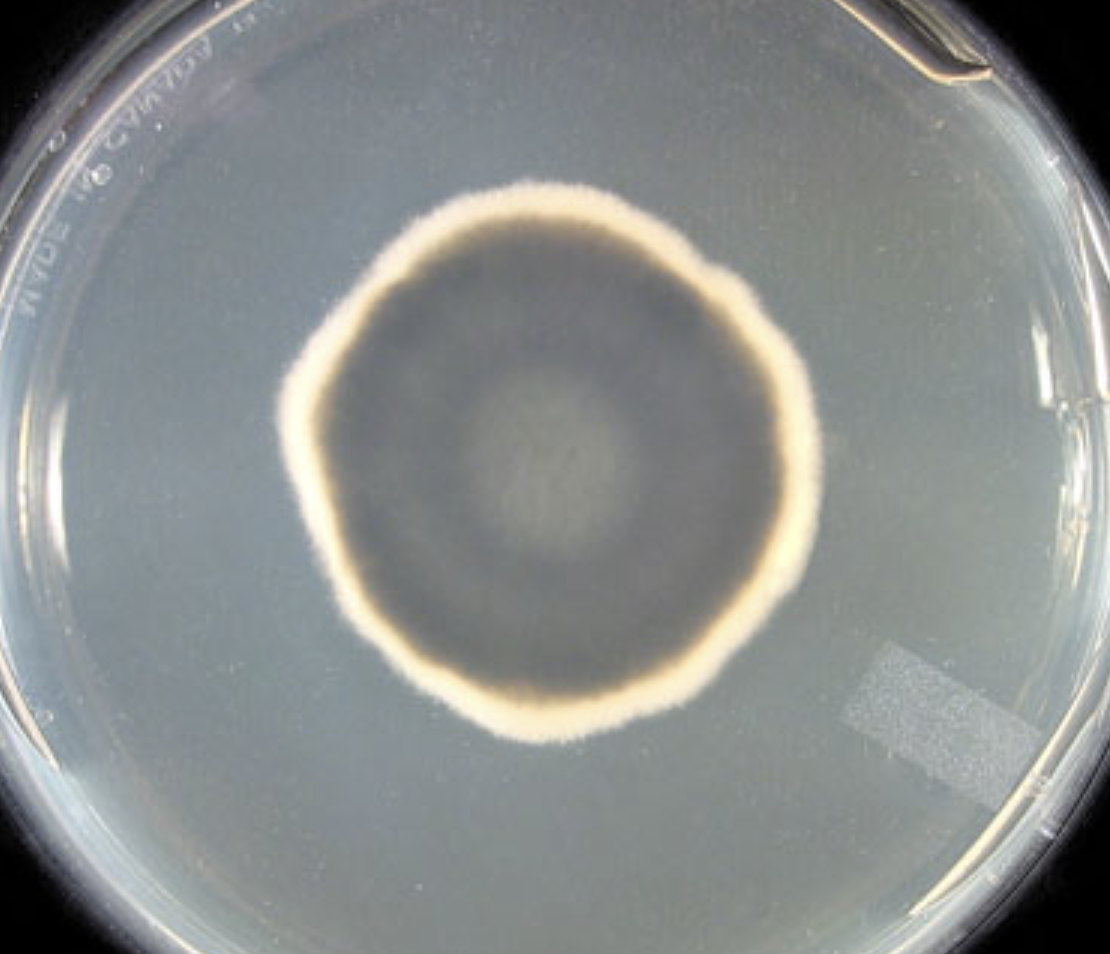
What organism is this? Obverse or reverse?
Bipolaris reverse
How do Bipolaris species produce conidia?
Through apical pores
What are four characteristics of Bipolaris conidia?
Multi-celled
Brown
Slightly protruding dark hila
Septa don’t intersect cell wall (peas in a pod)

What organism is this?
Bipolaris
What is the significance of Cladosporum?
Can be contaminants or pathogenic
What Cladosporum species causes brain abscesses?
C. bantianum
What Cladosporum species causes chromomycosis?
C. carrioni
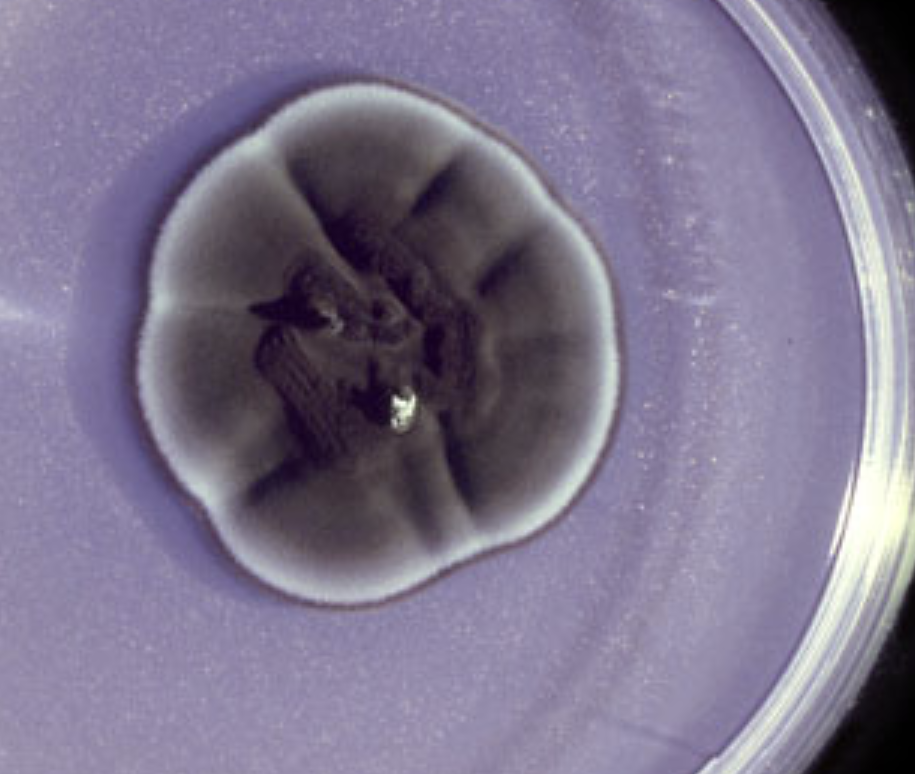
What organism is this? Obverse or reverse?
Cladosporum obverse
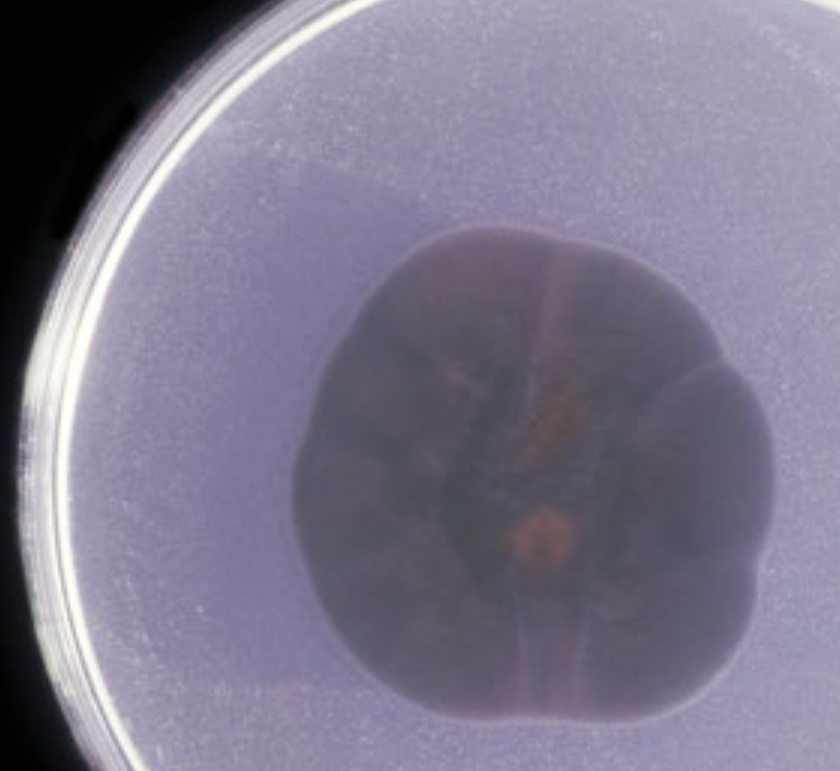
What organism is this? Obverse or reverse?
Cladosporum reverse
How many conidial chains does Cladosporum produce?
Two or more
What are four characteristics of conidial chains in cladosporum?
Branching and tree-like
Oval
Easily dislodged
Leave dark spots when broken off (shield cell)
What species is Cladosporum sometimes confused with?
Paecilomyces

What organism is this?
Cladosporum
What is the clinical significance of curvularia?
Contaminant
Rarely infects cornea
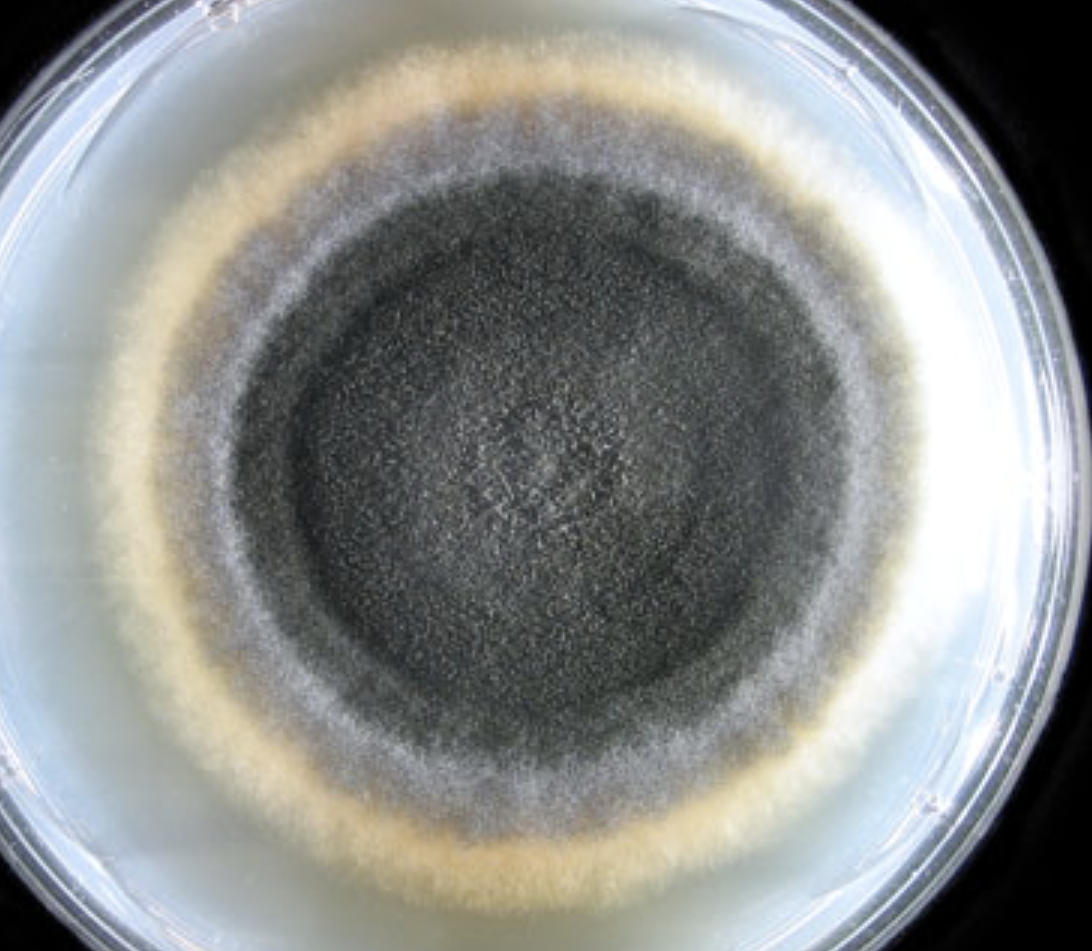
What species is this? Obverse or reverse?
Curvularia obverse
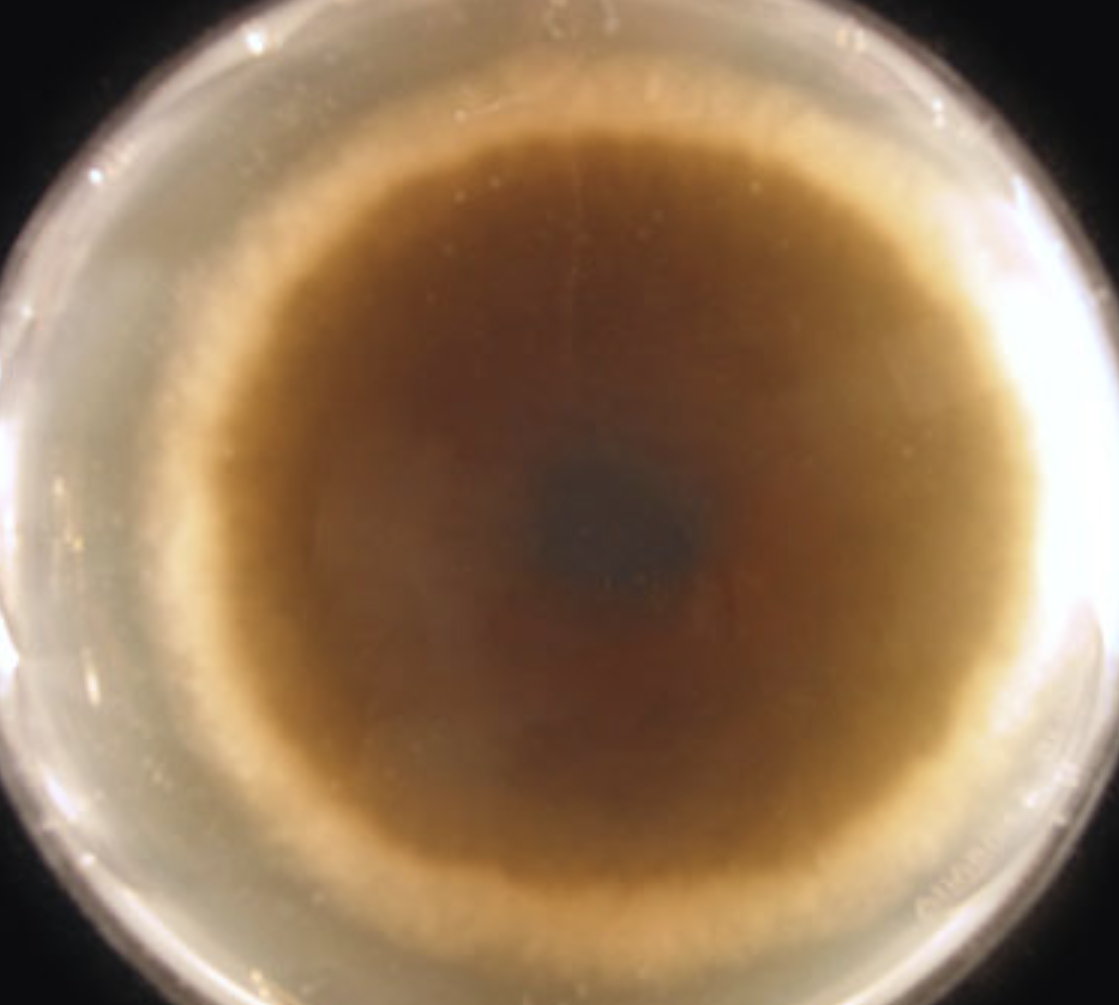
What species is this? Obverse or reverse?
Curvularia reverse
What are three characteristics of curvularia’s macroconidia?
Large and dark
No more than four cells
Appear curved due to central cell swelling

What organism is this?
Curvularia
What is the clinical significance of phialophora verrucosa?
Chromoblastomycosis
How quickly does phialophora verrucosa grow?
Slowly
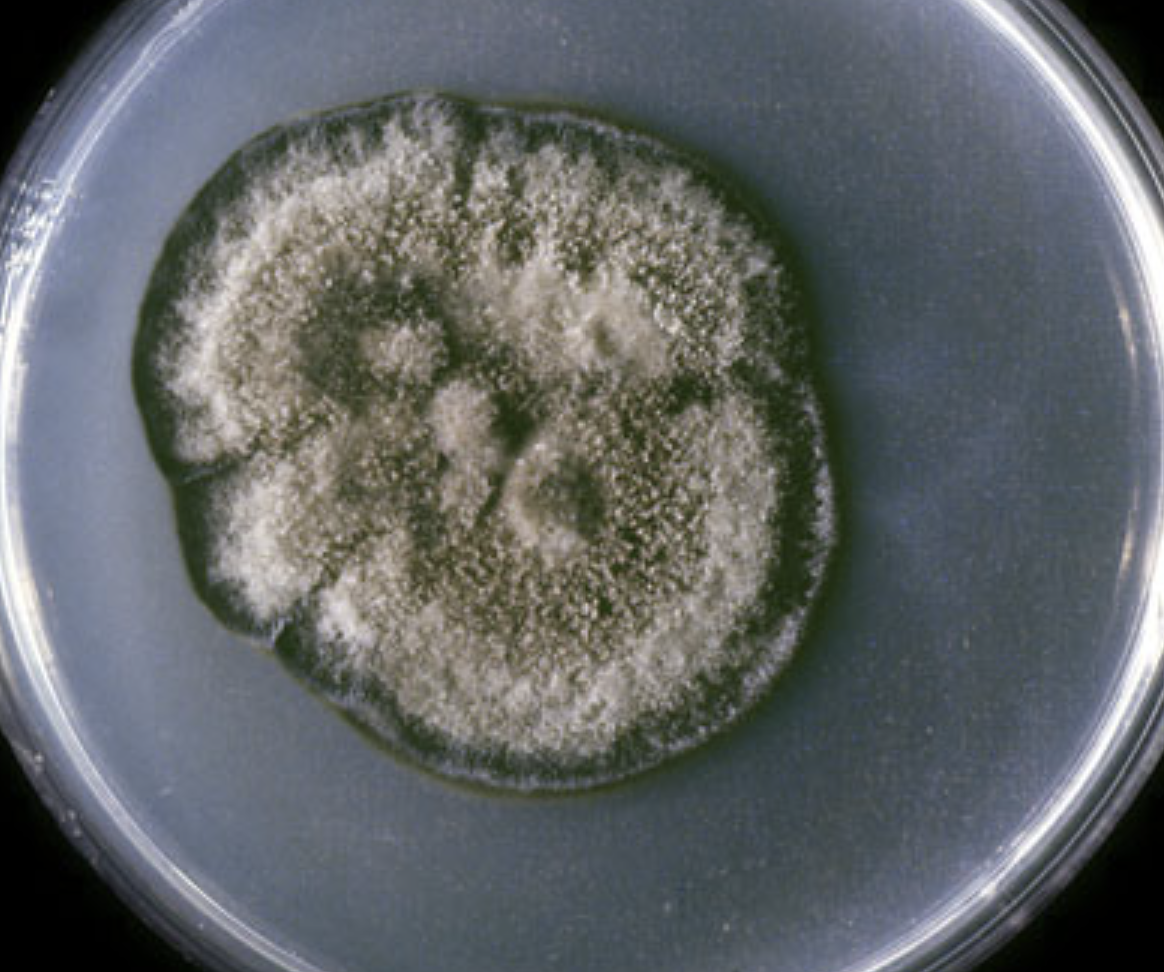
What organism is this? Obverse or reverse?
Phialophora verrucosa obverse
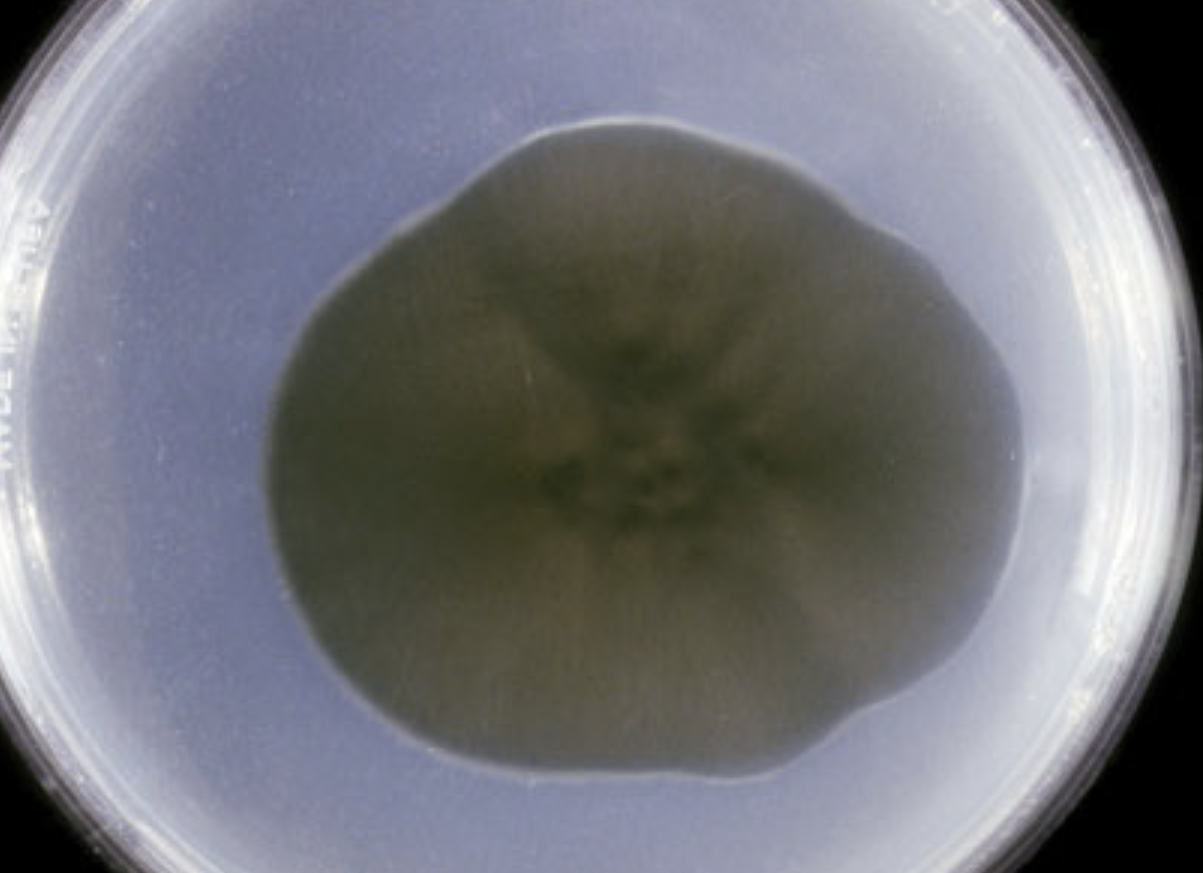
What organism is this? Obverse or reverse?
Phialophora verrucosa reverse
What do the hyphae of P. verrucosa bear?
Vase-shaped phialides that bear easily disrupted masses of oval conidia
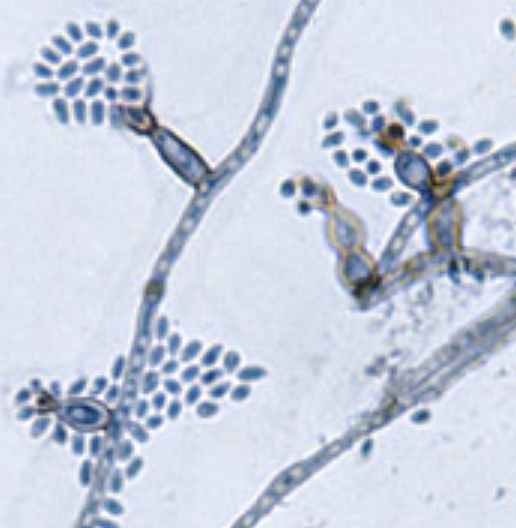
What organism is this?
Phialophora verrucosa